Background
Turbines used in aircraft and power generation facilities produce high output by using highly compressed air in the combustion chamber. Within the engine or power generator, the high-pressure turbine is located behind the combustion tube, making it subject to a great deal of stress because it is exposed to the pressure generated by the combustion energy and temperatures over 1,000 °C (1,832 °F).
Most turbine blades and nozzle guide vanes in high-pressure turbines have hollow structures inside them that help keep the unit cool. These components are manufactured using the lost wax process, where molten metal is poured into a mold made using a wax model of the component. Using a heat-proof core in the model enables manufacturers to create parts that have hollow structures. However, if there is a foreign object or processing defect in the hollow structure, it can cause inadequate heat dissipation, potentially resulting in an engine failure. To prevent this, the inner part of the turbine blade’s hollow structure is inspected during manufacturing and engine maintenance.
The Challenges of Inspecting Hollow Structures Inside Turbine Blades
In the past, minibore scopes with a diameter of 3 mm or less were used to inspect the hollow structures inside turbine blades for residues, scratches, and cracks. Equipped with a rod lens, a minibore scope provides good-quality images but suffered from many drawbacks that made the inspection slow, including:
The insertion tube’s long, thin lens cannot be bent and is easily damaged.
The images are small and hard to see without a monitor.
When a camera is attached, it unbalances the scope and makes it difficult to use.
The insertion tube has no articulation, making it impossible to look around inside the hollow structure.
The light guide is weak and does not provide sufficient illumination.
The Advantages of Using Thin Videoscopes for Inspecting the Interior of Turbine Blades
Unlike a minibore scope, thin fiberscopes and videoscopes are flexible and offer articulation. A fiberscope is made of a bundle of glass fibers, while videoscopes have a built-in image sensor. Both types have an insertion tube with an outer diameter of 2.4 mm and articulation at the distal end.
While fiberscopes are cost-effective, the images acquired through the bundle of glass fibers have a mesh-like appearance that can make it difficult for users to detect tiny defects during inspections. On the other hand, videoscopes, such as the Olympus IPLEX TX unit, provide numerous advantages in this application.
Bright, Clear Images
Videoscopes acquire images using an image sensor, so they can provide bright, clear images with no mesh-like appearance. By electrically amplifying image signals, videoscopes enable users to observe deep inside a hollow structure with a wide field of view and with sufficient brightness, even though there is limited light intensity. This makes it easier for users to detect residues, scratches, and other defects.
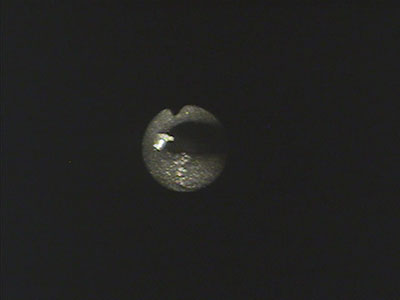 | 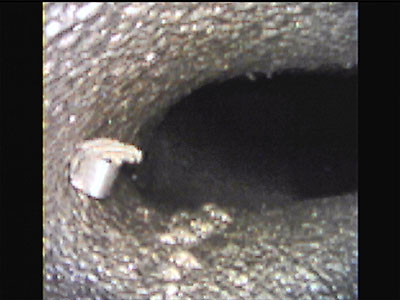 |
Fiberscope image
|
IPLEX TX image
|
Durable
The IPLEX TX videoscope’s insertion tube has a protective resin layer and an outer diameter as small as 2.4 mm. The insertion tube’s multilayered structure helps prevent the resin surface from getting damaged by irregularly-shaped parts, improving the tube’s durability.
An ordinary videoscope needs to be replaced entirely with a new one when its insertion tube gets damaged, but the IPLEX TX videoscope features a detachable insertion tube that can be easily replaced in the field. This reduces downtime when a failure occurs.
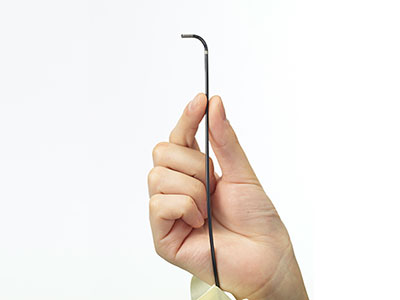 | 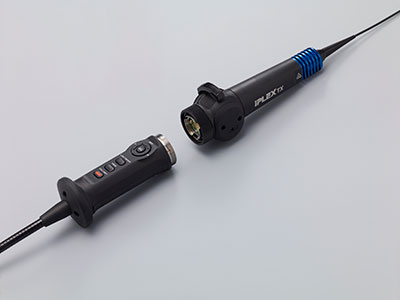 |
All-in-One System
The IPLEX TX videoscope can be used right out of the case without the need to assemble and adjust components. If you want to record the inspection results, still images and videos can be acquired using the videoscope’s handheld controller or the buttons below the monitor.
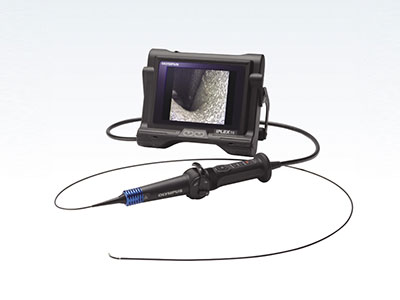
Summary
Inspecting the hollow structures inside turbine blades presents significant challenges that can be overcome by using a videoscope with a small-diameter insertion tube. With a durable, 2.4 mm diameter insertion tube, the IPLEX TX videoscope offers high image quality and articulation, enabling inspectors to easily maneuver in these narrow structures. Images can be viewed on a large monitor, and the inspection can be easily recorded and archived.
